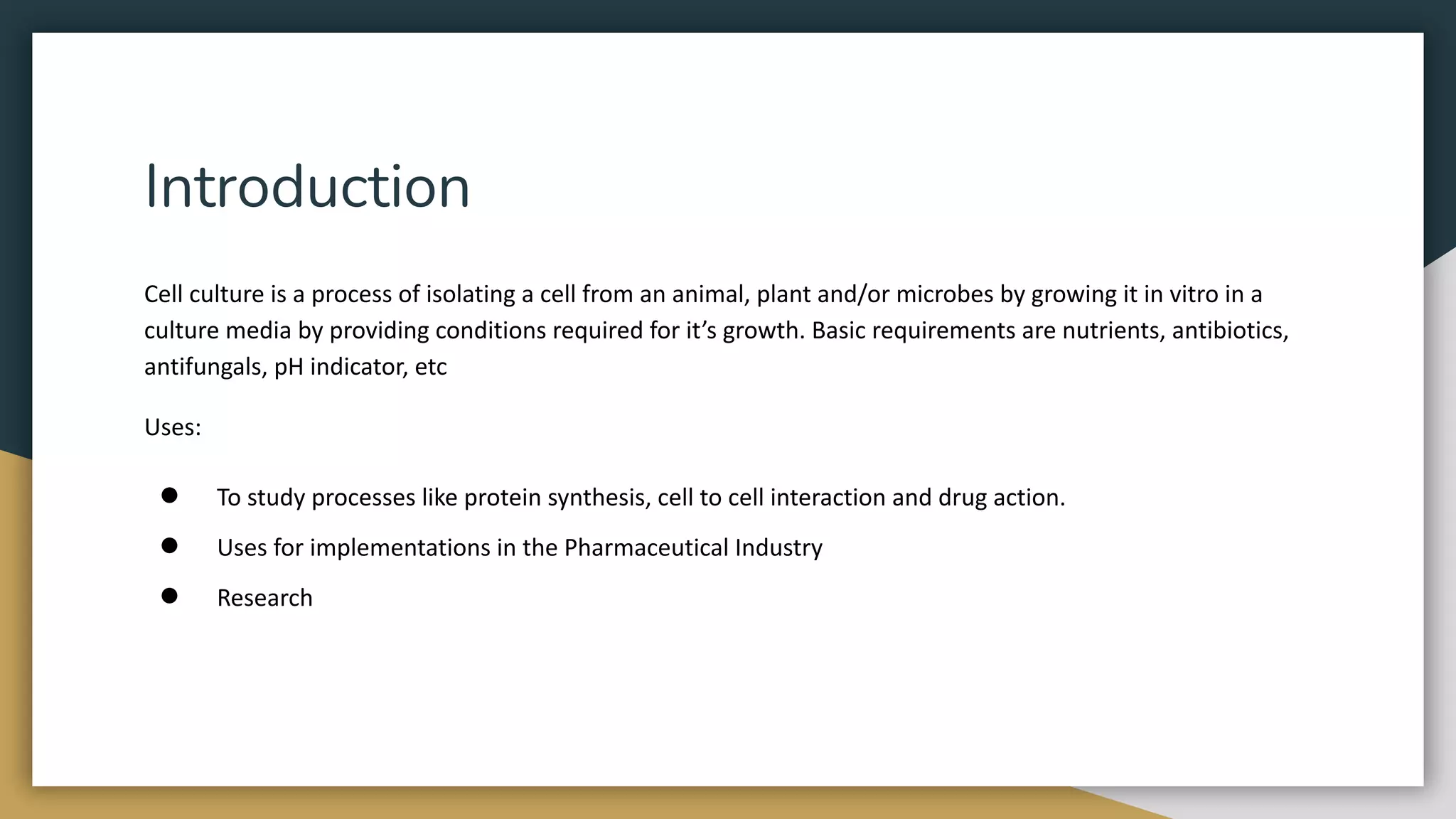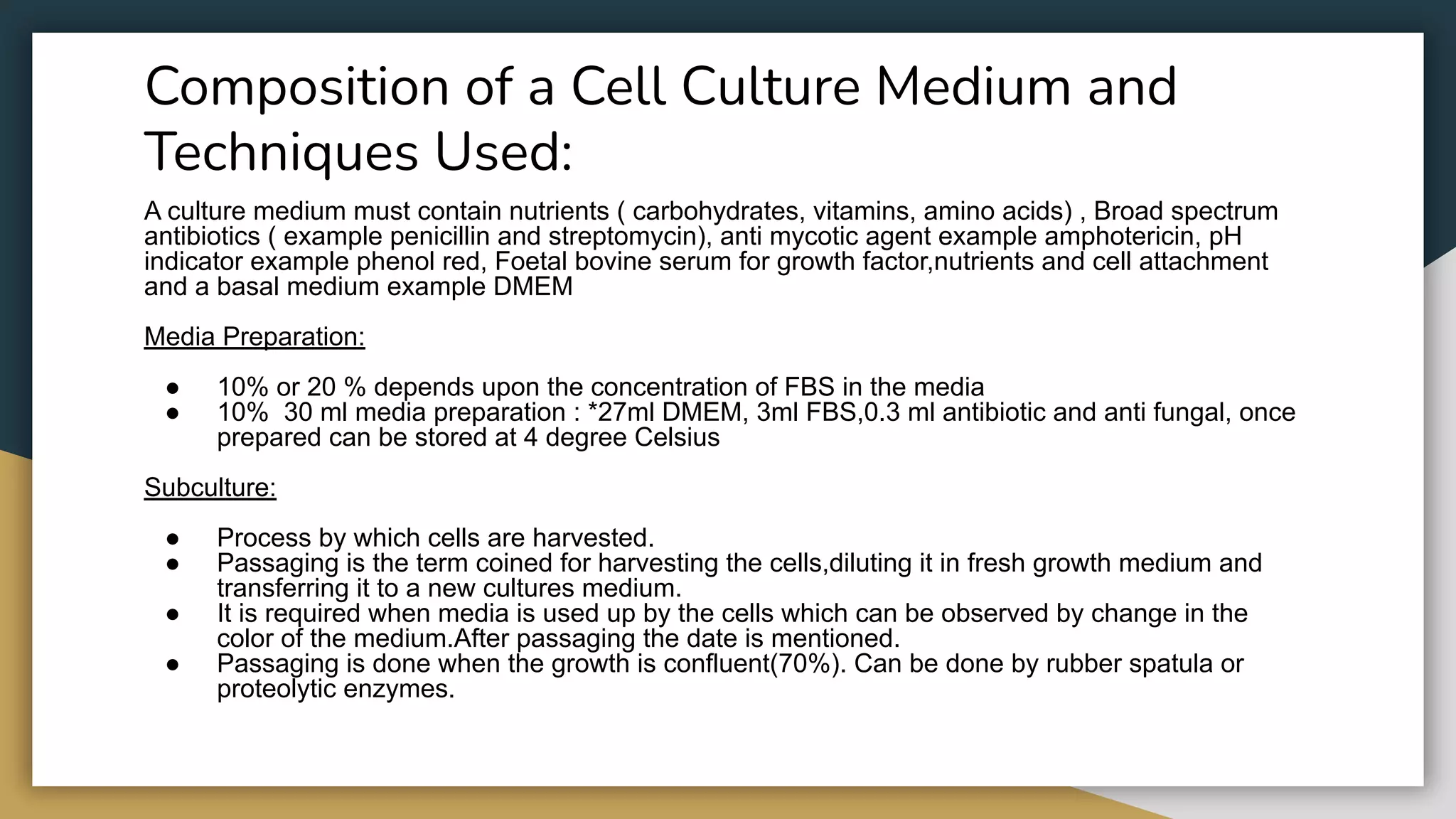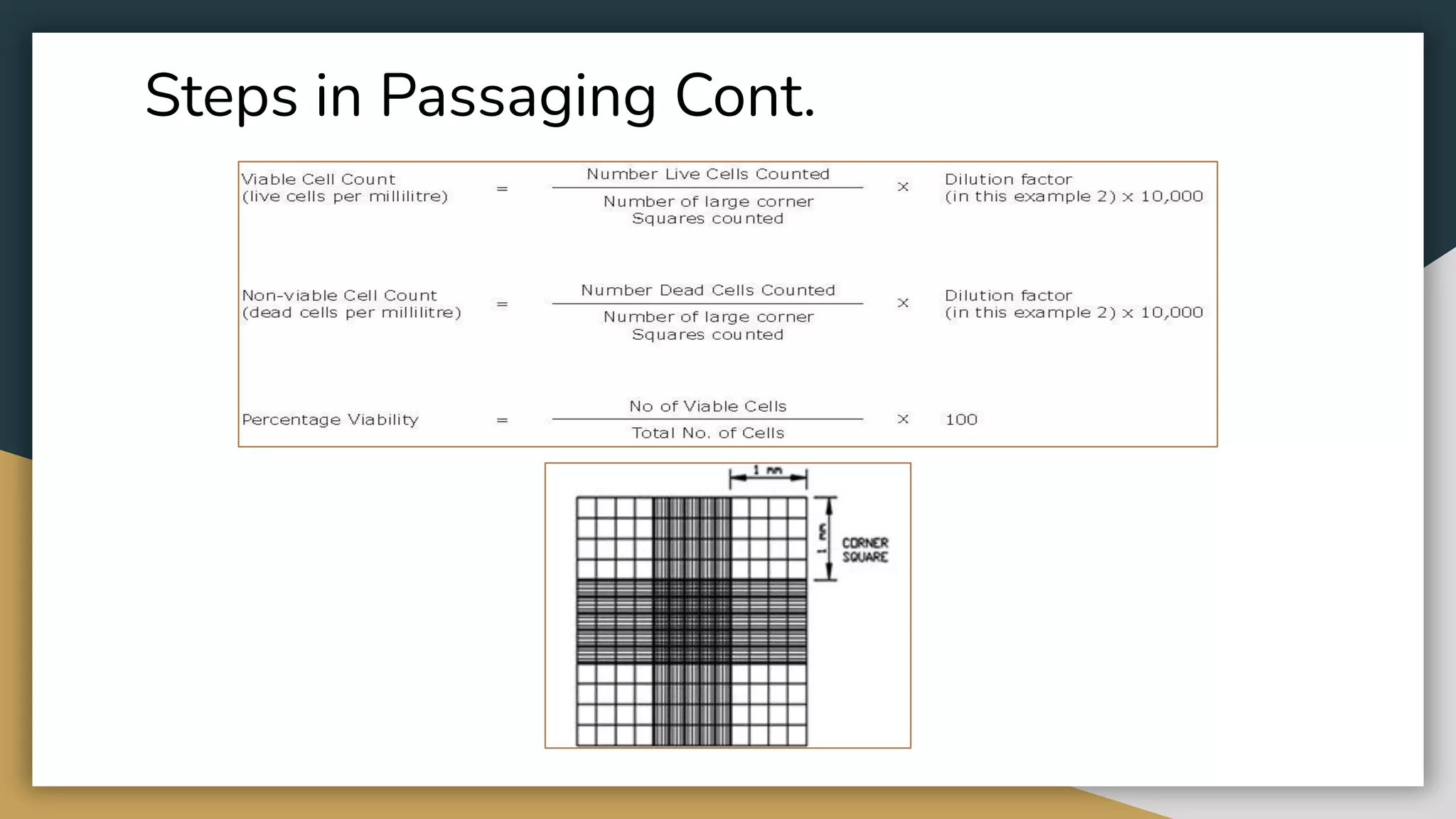The document provides a comprehensive overview of cell culture, detailing its definition, types, laboratory requirements, and methods used in the process. It covers aspects such as primary and continuous cell lines, necessary equipment, media preparation, and ethical concerns regarding the use of fetal bovine serum. Additionally, it outlines procedures for passaging, cryopreservation, and karyotyping, underscoring the importance of sterile practices and the implications of using animal-derived products.















